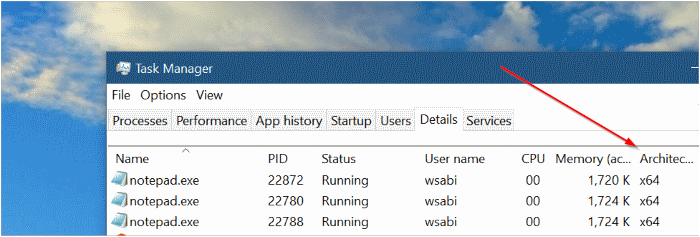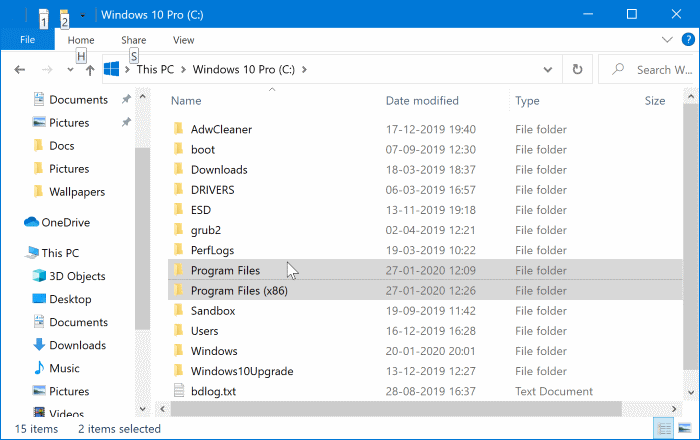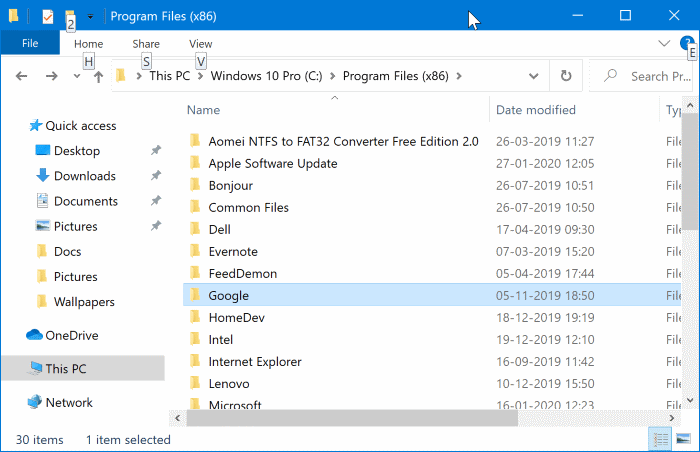Most PC users are running a 64-bit version of Windows 10. If you are also running a 64-bit version of Windows 10, you might want to make sure that all installed programs are 64-bit for optimal performance.
There are a few advantages of running a 64-bit version of a program on a 64-bit Windows 10 installation. A 64-bit program can access more memory than a 32-bit version as it supports more than 4 GB of memory. Because of this, a 64-bit application on 64-bit Windows might run a little faster.
As you likely know by now, a 64-bit Windows 10 installation allows installing and running both 32-bit and 64-bit (x64) architecture programs. However, you can install and run only 32-bit programs on 32-bit (x86) Windows 10 installation.
While optimizing your Windows 10 installation for better performance, you might want to know if an installed program is a 32-bit or 64-bit type. Luckily, figuring out if an installed program is 32-bit or 64-bit is quite easy.
Can I upgrade 32-bit apps to 64-bit?
Just like how you cannot upgrade a 32-bit Windows installation to 64-bit, you cannot upgrade 32-bit applications to 64-bit and vice versa.
You will have to uninstall the 32-bit application and then install the 64-bit one, if available.
IMPORTANT: Use this guide only if you are running 64-bit Windows 10. Because a 32-bit Windows installation doesn’t support installing 64-bit programs, all programs installed on a 32-bit Windows installation is 32-bit only.
Method 1 of 2
Check if a program is 32-bit 64-bit via Task Manager
If you are running build 19541 or later builds of Windows 10, checking the architecture of a program is quite easy. The Task Manager in Windows 10 build 19541 or later has a provision to display program architecture. Here is how to check a program is 64-bit or 32-bit in Task Manager.
Step 1: Open the Task Manager by right-clicking on an empty spot on the taskbar and then clicking the Task Manager option. Check out 11 ways to open the Task Manager guide for alternative options.
Step 2: Expand the Task Manager if you get the smaller version by clicking the More details option.
Step 3: Right-click on a column header (as shown in the picture below), Choose Select Columns option and then select Architecture from the list.
The Details tab of the Task Manager now shows the Architecture tab, which displays the architecture of all running programs.
Step 4: Finally, launch the program whose architecture you want to check. Have a look at the Architecture column to know the architecture of the program.
Method 2 of 2
Another way to check if a program is 64-bit or 32-bit in Windows 10
Step 1: Open the File Explorer and navigate to This PC. Double-click on the drive where Windows 10 is installed to see Program Files and Program Files (x86) folders, among others.
Note that Program Files (x86) is created only in the 32-bit Windows 10 installation.
Step 2: Now, check both Program Files and Program Files (x86) folders for the application entry whose architecture you want to figure out. If the application or application folder is present in Program Files, it means that the installed program is the 64-bit version.
Likewise, if the application is found under the Program Files (x86) folder, it’s a 32-bit application installed on a 64-bit Windows 10 installation. You may check the developer if there is a 64-bit version of the application available. If available, uninstall the present one and install the 64-bit one.
NOTE: If you are not sure about the Windows 10 installation architecture, refer to our check if your Windows 10 installation is a 64-bit or 32-bit guide.
Needless to say that you cannot install 64-bit programs on a 32-bit Windows 10 installation. So, if you are running 32-bit Windows 10, all programs installed on it are 32-bit programs only.



